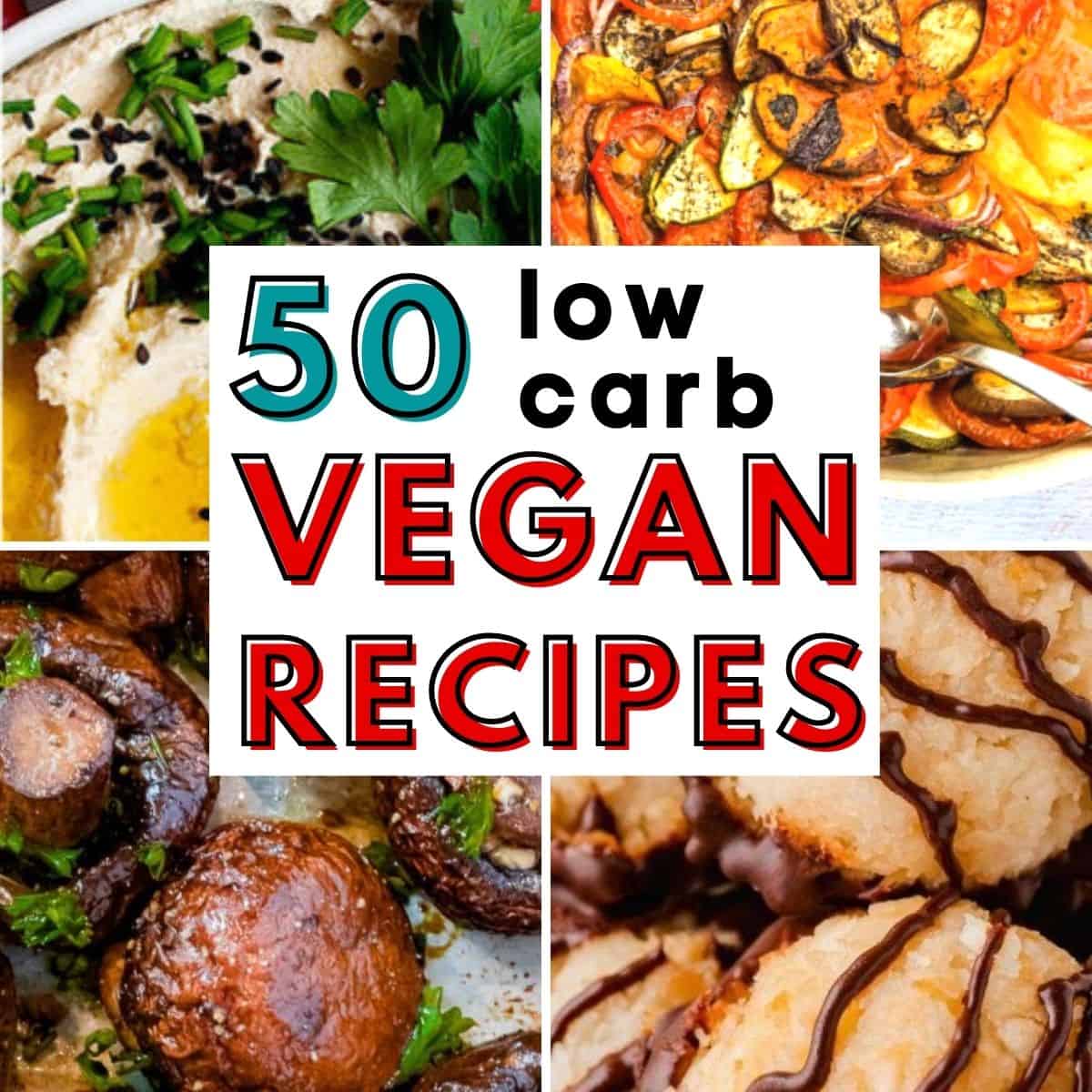Embark on a culinary journey with “Low-Calorie Vegan Recipes That Satisfy,” a vibrant exploration of delicious and healthy plant-based cuisine. This guide unveils the secrets to creating satisfying vegan meals without compromising on flavor or nutritional value. Discover a treasure trove of recipes, from hearty soups and vibrant stir-fries to delightful desserts and smoothie bowls, all designed to keep you full and energized. Learn how to master the art of combining textures and flavors to elevate your vegan experience, and unlock the power of mindful eating to achieve your weight goals.
We’ll delve into a comprehensive list of low-calorie vegan ingredients, highlighting their nutritional benefits and satiety factors. Detailed, step-by-step recipes will guide you through the creation of each dish, offering ingredient substitutions and variations to suit your preferences. Practical tips and a sample meal plan will empower you to confidently navigate the world of low-calorie vegan eating, ensuring you enjoy a fulfilling and sustainable lifestyle.
Popular Low-Calorie Vegan Ingredients
Embarking on a low-calorie vegan journey doesn’t mean sacrificing flavor or feeling satisfied. Many nutrient-rich plant-based foods are naturally low in calories and surprisingly filling. These ingredients are key to creating delicious and healthy vegan meals that keep you feeling full and energized.
Low-Calorie Vegan Ingredients and Their Nutritional Benefits
Choosing the right ingredients is crucial for successful weight management. The following table highlights ten popular low-calorie vegan options, detailing their nutritional benefits and satiety factors. Remember that calorie counts can vary slightly depending on preparation methods and serving sizes.
| Ingredient | Calories per serving (approx.) | Nutritional Benefits | Satiety Factor |
|---|---|---|---|
| Spinach | 7 calories per cup | Excellent source of Vitamins A, K, and C; rich in iron and antioxidants. | High; its volume contributes to fullness. |
| Broccoli | 55 calories per cup | High in fiber, Vitamins C and K, and folate. | High; the fiber content promotes satiety. |
| Mushrooms | 15 calories per cup (sliced) | Good source of selenium, potassium, and B vitamins. | Moderate; adds bulk and savory flavor to meals. |
| Lettuce | 5 calories per cup | Rich in Vitamin A and K, low in calories and carbohydrates. | Moderate; adds volume and crunch to salads and wraps. |
| Cauliflower | 25 calories per cup (florets) | Good source of Vitamin C and fiber. | High; versatile and can be used in many dishes. |
| Zucchini | 16 calories per cup (sliced) | Good source of Vitamin C and potassium. | Moderate; adds moisture and mild flavor to dishes. |
| Celery | 6 calories per stalk | Low in calories and carbohydrates; a good source of Vitamin K. | High; its fibrous nature and water content contribute to fullness. |
| Bell Peppers | 20 calories per pepper | Excellent source of Vitamin C and antioxidants. | Moderate; adds sweetness and vibrant color to meals. |
| Asparagus | 20 calories per cup | Rich in folate, Vitamins A, C, and K. | Moderate; adds a slightly bitter, yet satisfying flavor. |
| Eggplant | 20 calories per cup (diced) | Good source of fiber and potassium. | Moderate; its spongy texture absorbs flavors well. |
Vegan Protein Sources for Low-Calorie Diets
Adequate protein intake is essential for maintaining muscle mass and satiety, even on a low-calorie diet. The following table compares the protein content of various vegan protein sources.
| Protein (grams per serving) | Source | Description |
|---|---|---|
| 20-25g | Tofu | Versatile soy-based protein, easily adaptable to various dishes. |
| 15-20g | Tempeh | Fermented soybean product with a slightly earthy flavor. |
| 12-15g | Lentils | High in fiber and protein; excellent in soups, stews, and salads. |
| 10-12g | Chickpeas | Versatile legume; can be used in hummus, salads, or as a snack. |
| 8-10g | Edamame | Young soybeans; delicious steamed or added to stir-fries. |
Versatile Low-Calorie Vegan Staples
Five versatile low-calorie vegan staples can form the foundation of many satisfying and nutritious meals. Their adaptability allows for creative recipe development, ensuring variety and preventing dietary boredom.
1. Lentils: These tiny powerhouses are incredibly versatile. Use red lentils to create creamy soups and dahls, or incorporate green or brown lentils into hearty salads, stews, and veggie burgers. Their high fiber content promotes satiety.
2. Tofu: This soy-based protein is a blank canvas for flavors. Pressing tofu removes excess water, resulting in a firmer texture perfect for stir-fries, curries, or even as a substitute for meat in tacos and sandwiches. Its protein content contributes to feelings of fullness.
3. Spinach: A nutritional powerhouse, spinach adds volume and nutrients to any dish without significantly impacting the calorie count. Incorporate it into smoothies, omelets (using chickpea flour), pasta sauces, or as a side dish.
4. Chickpeas: These legumes are incredibly versatile. Use them whole in salads, roast them for a crunchy snack, or blend them into hummus for a protein-packed dip. Their fiber content helps keep you full.
5. Mushrooms: A great source of umami flavor, mushrooms add depth and texture to various dishes. Sauté them as a side, incorporate them into pasta sauces, or use them as a meat substitute in vegan burgers or stews. Their low calorie count and satisfying texture make them a great addition to any low-calorie vegan meal.
Tips for Maximizing Satiety on a Low-Calorie Vegan Diet
Maintaining a feeling of fullness on a low-calorie vegan diet requires a strategic approach to food choices and eating habits. By focusing on nutrient-dense foods and mindful eating practices, you can effectively manage hunger and avoid cravings while sticking to your calorie goals. This section explores key strategies to achieve lasting satiety.
High-Fiber Foods for Enhanced Satiety
Fiber, a type of carbohydrate the body can’t digest, adds bulk to your stool, promoting regularity and a feeling of fullness. High-fiber foods naturally expand in the stomach, slowing digestion and keeping you feeling satisfied for longer. Including ample fiber in your low-calorie vegan diet is crucial for effective weight management and sustained energy levels.
- Legumes: Lentils, chickpeas, and beans are nutritional powerhouses packed with fiber and protein. Imagine a vibrant lentil soup, its hearty texture and earthy aroma promising sustained energy.
- Whole Grains: Opt for whole-wheat bread, brown rice, quinoa, and oats, which offer more fiber than their refined counterparts. Picture a fluffy bowl of quinoa studded with colorful vegetables, providing both nourishment and visual appeal.
- Fruits and Vegetables: Berries, apples, broccoli, and leafy greens are excellent sources of fiber and essential vitamins. Visualize a refreshing salad bursting with vibrant colors and textures – a crunchy mix of greens, juicy berries, and crisp vegetables.
Mindful Eating Practices for Improved Satiety
Mindful eating, a practice that involves paying close attention to your body’s hunger and fullness cues, is essential for achieving and maintaining a healthy weight. It allows you to savor each bite, recognize your body’s signals, and avoid overeating.
- Eat Slowly: Give your body time to register fullness signals. Consider savoring each mouthful, noticing the textures and flavors, and chewing thoroughly.
- Put Down Your Utensils: Between bites, place your fork or spoon down. This creates a pause, allowing you to check in with your hunger levels.
- Avoid Distractions: Turn off the TV and put away your phone while eating. Focus on the meal and enjoy the experience without external distractions.
The Role of Healthy Fats and Protein in Satiety
Healthy fats and protein are crucial for satiety on a low-calorie vegan diet. They promote a feeling of fullness by slowing digestion and stabilizing blood sugar levels, preventing energy crashes and subsequent hunger pangs.
Protein, a building block of the body, is essential for maintaining muscle mass and satiety. Healthy fats provide sustained energy and contribute to overall health. Combining both in meals ensures lasting fullness and prevents unwanted hunger.
- Protein Sources: Tofu, tempeh, edamame, lentils, and quinoa are excellent sources of plant-based protein. Imagine a hearty tofu scramble bursting with flavor and texture.
- Healthy Fats: Avocado, nuts, seeds, and olive oil provide essential fatty acids. Visualize a creamy avocado toast, the richness of the avocado complementing the wholesome bread.
Hydration and Satiety
Adequate hydration plays a significant role in managing hunger. Water helps to fill the stomach, reducing feelings of emptiness. Drinking water before meals can also help you consume less food overall. Always ensure you are consistently hydrated throughout the day.
Texture and Flavor Combinations for Enhanced Dining Experience
Combining different textures and flavors in your meals adds depth and complexity, enhancing the overall dining experience and contributing to satiety. A variety of textures and flavors keeps your meals interesting and prevents boredom, which can lead to overeating. For example, a meal combining the crunch of roasted vegetables, the creaminess of avocado, and the heartiness of lentils provides a more satisfying experience than a meal with only one texture or flavor.
Step-by-Step Guide to Creating a Low-Calorie Vegan Meal Plan

Creating a satisfying and effective low-calorie vegan meal plan requires careful consideration of macronutrient balance, satiety, and individual preferences. This guide provides a structured approach to building a weekly plan, emphasizing whole foods and mindful portion control. Remember to consult with a healthcare professional or registered dietitian before making significant dietary changes, especially if you have underlying health conditions.
Sample 7-Day Low-Calorie Vegan Meal Plan
A well-structured meal plan ensures you consume a variety of nutrients while keeping calorie intake within your desired range. This sample plan offers approximately 1200-1500 calories per day, but individual needs may vary. Adjust portion sizes as needed to meet your specific caloric goals.
| Day | Breakfast (approx. 300-400 calories) | Lunch (approx. 400-500 calories) | Dinner (approx. 400-500 calories) |
|---|---|---|---|
| Monday | Overnight oats with berries and chia seeds: Rolled oats soaked overnight in almond milk with a handful of mixed berries and a tablespoon of chia seeds. A vibrant mix of textures and subtle sweetness. | Large salad with quinoa, chickpeas, and a lemon vinaigrette: A colorful and substantial salad featuring a protein-rich base of quinoa and chickpeas, dressed with a zesty lemon vinaigrette. | Lentil soup with whole-wheat bread: Hearty and flavorful lentil soup, providing fiber and protein, served with a slice of whole-wheat bread for added carbohydrates. |
| Tuesday | Smoothie with spinach, banana, and almond milk: A creamy green smoothie packed with nutrients, featuring the vibrant green of spinach contrasted by the creamy yellow of banana. | Vegan chili with brown rice: A spicy and satisfying vegan chili, rich in beans and vegetables, served with a side of brown rice for added texture and fiber. | Tofu scramble with vegetables: A protein-rich scramble made with crumbled tofu and a medley of colorful vegetables, offering a hearty and satisfying meal. |
| Wednesday | Toast with avocado and tomato: Whole-wheat toast topped with creamy avocado and slices of juicy tomato, offering a simple yet satisfying breakfast. | Buddha bowl with roasted vegetables and hummus: A visually appealing bowl filled with roasted vegetables of various colors and textures, complemented by a creamy dollop of hummus. | Black bean burgers on whole-wheat buns: Homemade black bean burgers, bursting with flavor and texture, served on whole-wheat buns with lettuce and tomato. |
| Thursday | Greek yogurt (vegan) with fruit and granola: Creamy vegan yogurt topped with fresh fruit and a sprinkle of crunchy granola, a balanced mix of textures and flavors. | Leftover black bean burgers | Pasta with marinara sauce and vegetables: Whole-wheat pasta tossed in a flavorful marinara sauce and a mix of colorful vegetables, providing a balanced and satisfying meal. |
| Friday | Smoothie with berries and protein powder: A refreshing and protein-rich smoothie, featuring a blend of vibrant berries and a scoop of vegan protein powder. | Salad with grilled tofu and a peanut dressing: A savory salad featuring grilled tofu, offering a satisfying source of protein, dressed with a creamy peanut dressing. | Vegan pizza with whole-wheat crust: A delicious and customizable vegan pizza, made with a whole-wheat crust and topped with your favorite vegetables and vegan cheese. |
| Saturday | Pancakes made with whole-wheat flour and banana: Fluffy pancakes made with whole-wheat flour and mashed banana, offering a naturally sweet and satisfying breakfast. | Leftover vegan pizza | Stir-fry with tofu and brown rice: A flavorful stir-fry featuring firm tofu, providing a hearty source of protein, served with a side of brown rice. |
| Sunday | Oatmeal with apples and cinnamon: Warm and comforting oatmeal topped with sliced apples and a sprinkle of cinnamon, offering a wholesome and satisfying breakfast. | Soup and salad | Vegetable curry with brown rice: A fragrant and flavorful vegetable curry, rich in vegetables and spices, served with a side of brown rice. |
Adjusting Portion Sizes and Swapping Ingredients
Maintaining a balanced low-calorie vegan diet requires flexibility. To adjust a meal plan to accommodate individual needs, consider these strategies:
* Portion Control: Visual cues, such as using smaller plates or measuring food, can help regulate portion sizes effectively. For instance, a serving of brown rice might be 1/2 cup instead of a full cup.
* Ingredient Swaps: Substitute higher-calorie ingredients with lower-calorie alternatives. For example, replace full-fat coconut milk with light coconut milk in curries or swap regular pasta for whole-wheat pasta.
* Calorie Tracking: Using a food tracking app can provide valuable insights into your daily calorie intake, allowing you to make informed adjustments to your meal plan. This helps to maintain consistency and achieve your weight goals.
* Prioritizing Nutrient Density: Choose foods that are high in nutrients but relatively low in calories. Leafy greens, vegetables, and legumes are excellent examples. Prioritizing these nutrient-dense foods ensures that you feel full and satisfied despite lower calorie intake.
With “Low-Calorie Vegan Recipes That Satisfy,” you’re not just following recipes; you’re embarking on a transformative culinary adventure. This guide provides the knowledge and inspiration to craft delicious, healthy, and satisfying vegan meals that nourish your body and soul. From understanding the nutritional power of specific ingredients to mastering the art of mindful eating, you’ll gain the tools to create a personalized, sustainable, and enjoyable low-calorie vegan diet. Prepare to savor every bite and embrace a vibrant, healthy lifestyle.
FAQ Resource
Can I adapt these recipes to fit my specific dietary needs (e.g., allergies)?
Absolutely! Many recipes offer suggestions for ingredient substitutions. Always check ingredient labels carefully and consult with a doctor or registered dietitian if you have specific dietary restrictions or allergies.
How can I store leftovers from these recipes?
Proper storage is crucial for food safety. Allow dishes to cool completely before storing them in airtight containers in the refrigerator. Most recipes will last for 3-4 days, but always check for any signs of spoilage before consuming.
Are these recipes suitable for beginners?
Yes! The recipes are designed with clear, step-by-step instructions, making them accessible to cooks of all skill levels. Even beginners can achieve delicious and satisfying results.
What if I don’t have all the ingredients listed in a recipe?
Many recipes offer substitutions, and you can often adapt them to use what you have on hand. Focus on the core flavors and textures to achieve a similar outcome, even with slightly different ingredients.


